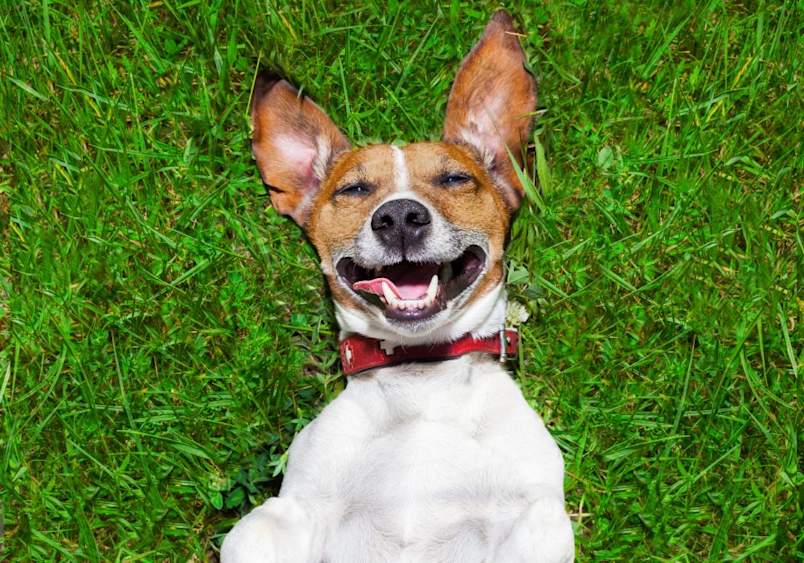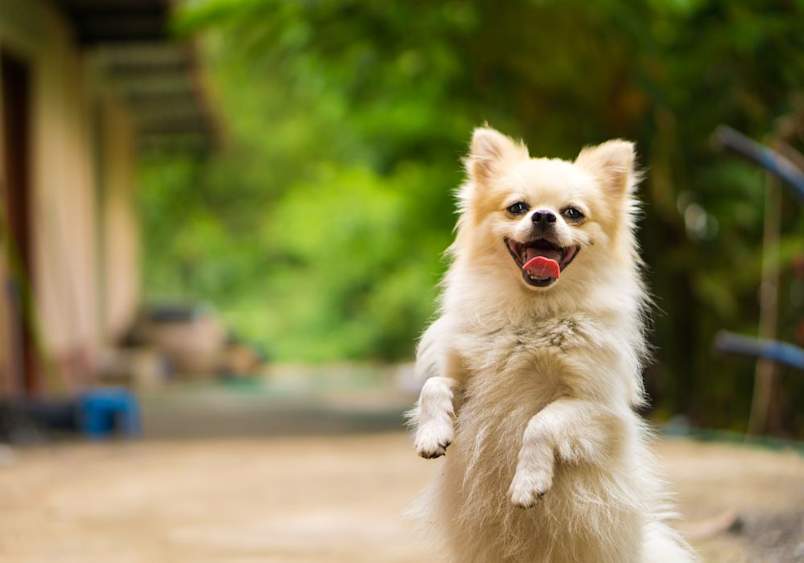
Choosing the right dog name takes some thought. You want to make sure to get it right since your dog will have this name for possibly a decade or more. Not only will you be saying your dog’s name dozens of times throughout the day, but you’ll also use it on veterinarian paperwork and even shout it across the dog park from time to time.
But how do you know when you’ve found the perfect name? In today’s post, we share a long list of dog names as well as some tips for choosing a name that reflects your dog’s special personality. We’ll also cover some considerations to keep in mind throughout the naming process to ensure you find an appropriate fit.
Tips for Choosing the Perfect Dog Name
You’re not alone if you feel overwhelmed searching through hundreds of puppy names! To help you narrow your options, there are a few things you can consider. You might want your dog’s name to incorporate their unique traits or looks. For instance, that splotch of color on their face could give inspiration for names like “Zorro” or “Phantom.” Your dog’s tendency to howl when they’re excited could mean a funny name like “Babbles” is fitting.
You’ll also want to make sure your dog’s name is easy to pronounce. If you have kids in your family, long or difficult names can be hard for them to remember and repeat. Keep in mind you’ll also be providing your pup’s name to the vet’s office, and you don’t want to have to spell out a long, complicated name every time you call them.
Finally, make sure you pick a respectful name for your pet. A joking name that seemed funny in your younger years might not seem as cute down the line!
Cute Dog Names for Pups with Character
Looking for cute dog names? There’s no shortage of adorable names to honor the sweetness of your new pet. Maybe your furry friend is as sweet as a “Cupcake” or as goofy as a "Wobble.”
Take a look at these cute puppy names and see if one resonates with you!
Noodle
Pumpkin
Loopy
Pinky
Goober
Curly
Beans
Pickle
Wiggles
Snuffles
Pixie
Berry
Waffles
Mixer
Gnome
Possum
Tater Tot
Sausage
Frankie
Dumpling
Sparkles
Giddy
Flea
Tinkerbell
Fuzzy
Prancer
Happy
Lucky
Clover
Kiwi
Jellybean
Yoshi
Rocket
Boo
Cheddar
Einstein
Glitter
Bagel
Champ
ChooChoo
Lox
Nessie
Rufus
Crinkle
Moose
Latte
Carrot
Twizzler
Mochi
Patch
Rapunzel
Phantom
Spud
Basil
Pepper
Cherry
Muffy
Sprinkles
Chestnut
Cinnamon
Peanut
Frodo
Gollum
Skittles
Boomer
Frosty
Marshmallow
Mimi
Cricket
Lady
Chanel
Cookie
Willow
Cosmo
Ozzy
Brownie
Pecan
Chewy
Biscuit
Mushroom
Scooter
Soda
Bubbles
Buster
Roscoe
Ranger
Jewel
Mocha
Fawn
Boots
Cocoa
Tigger
Sunny
Peaches
Oreo
Pebbles
Muffin
Fluffernutter
Pearl
Birdie
Best Dog Names All-Around
What people often consider to be “good” dog names are ones that really capture a dog’s individuality while not being so unusual that they’re confusing. These names are often inspired by pop culture over the decades but can even reference famous real dogs, such as Fido, an Italian dog that was dedicated to his owner long after the man died.
Here are some of the best dog names that have stood the test of time:
Bear
Titus
Brutus
Dusty
Bandit
Smokey
Spot
Sox
Boxer
Forrest
Zeus
Minerva
Apollo
Foster
Morris
Jesper
Taz
Goliath
Mickey
Minnie
King
Titan
Rey
Binx
Thackery
Jack
Rocky
Petey
Iris
Calypso
Skye
Gracie
Shiloh
Winnie
Belle
Nemo
Toto
Ryder
Fiona
Hachiko
Liberty
Scooby
Snoopy
Bijou
Lottie
Mabel
Lola
Sophie
Benji
Clifford

Popular Dog Names That Always Appeal
Some names for dogs are incredibly common, and you just might meet three of four dogs with the same name in your neighborhood. These popular dog names have climbed to the top of many owners’ lists for good reason. They’re typically short, easy to pronounce, and are often interchangeable with human names.
Here are some classic boy and girl dog names, as well as some gender-neutral options:
Marley
Hazel
Zoey
Ginger
Max
Charley
Stella
Rosie
Jackson
Tucker
Lily
Nala
Cooper
Milo
Ollie
Bones
Griffin
Ziggy
Finn
Murphy
Scruffy
Bailey
Duke
Sadie
Bentley
Toby
Luna
Scout
Thor
Lilo
Elsie
Maggie
Dolly
Penny
Charlie
Daisy
Bella
Hugo
Gizmo
Chloe
Rusty
Buddy
Oscar
Benson
Molly
Winston
Coco
Sparky
Goldie
Lucy
Trending Dog Names for 2025
When you’re looking for dog name ideas, you might be surprised at how many you encounter in your everyday life! The next time you turn on your favorite Marvel movie or listen to an album from a talented musician, be on the lookout for interesting names!
Families with little ones are sure to get a lot of input from the kids thanks to the popularity of certain shows like Paw Patrol, Bluey, and Sharkdog. The Star Wars franchise is another goldmine for names and is one that appeals to adults and kids alike.
Here are a few options to get you started:
Groot
Marshall
Rubble
Rue
Katniss
Peeta
Loki
Chewbacca
Ewok
Bilbo
Andor
Hulk
Rogue
Storm
Bucky
Taylor
Swifty
Gaga
Rihanna
Ariana
Billie
Lamar
Bruno
Harry
Gigi
Bluey
Stripe
Chillie
Trixie
Bingo
Honey
Lila
Missy
Indy
Mackenzie
Brandy
Alfie
Bartlebee
Bobo
Busker
Chattermax
Captain
Digger
Sharkdog
Quigley
Brody
Daniel Tiger
Tuesday
Chase
Zuma
Unique Dog Name Ideas for Uncommon Pets
There’s something special about a dog with a nontraditional name. You might only meet one dog named “Nickle” in your life, for example, and you’re sure to always remember him because of his one-of-a-kind name. But where do owners find these oddball names?
Some people name their dogs after the specific circumstances around their adoption day. Did you adopt your dog on a rainy day? A name like “Stormy” or “Rumble” could help you remember that special day.
Were you hiking in the woods near a river when you found them? “River” or “Banks” could be good options. Maybe their shaggy fur reminded you of a farm animal when you first saw them, and thus, their name is now “Goat.”
Get your creativity flowing with these unique dog names:
Blaze
Runner
Racer
Zippy
Lightning
Thunder
Skunk
River
Aqua
Leif
Runt
Twister
Snickers
Pancake
Fergie
Bolt
Marlin
Goat
Cyrus
Juggernaut
Jupiter
Mercury
Roper
Filly
Shepherd
Aspen
Froggy
Janus
Mare
Merlin
Fable
Adelaide
Nym
Delta
Lark
Avalon
Brooklyn
Yule
Dipsy
Comet
Lancelot
Avenger
Beetlejuice
Fletcher
Teagan
Alma
Rags
Tawny
Pippi
Fidget
Unique Black Dog Names
The color of your dog’s coat is determined by genetics and involves a combination of dominant and recessive genes as well as mutations. Some dogs are born with pure black coats, and these stunning beauties certainly stand out from the others in the litter. Many owners want to honor this distinctive feature when naming their pet.
Here are some suggestions for unique names if you have a black dog:
Onyx
Soot
Midnight
Pitch
Coal
Jet
Inky
Sable
Raven
Shadow
Umbra
Shade
Blackberry
Olive
Carbon

Additional Dog Name Considerations
It’s always a good idea to give a name a trial run before committing to it. Just because you’ve called your dog a name for a day or two doesn’t mean you have to stick with that name forever! Of course, you don’t want to confuse your dog by switching their name constantly, but testing out options can help you make sure you’re choosing the right one.
Bounce some ideas around with your family and friends. They can offer a perspective you might not have thought of. For example, you might love the name “Nano” for your itsy-bitsy Chihuahua, but your mother might point out that your dog could easily confuse that name with the word “No.”
Don’t be afraid to try the name out in public, either! Take your dog to the dog park or to a training session and see how others react to the name. If you name your pet something like “Fang,” you might realize other owners are hesitant to let their dogs play with yours out of fear (even if Fang is a perfectly well-behaved dog!).
Additionally, there’s always the possibility that the name you’re tossing around isn’t quite as unique as you thought! You might be at the dog park and calling for your little “Peaches” only to have five other dogs come over.
Finally, you’ll want to make sure your dog responds well to their name. While it will take a few days for your dog to pick up on their name, you’ll want to make sure they don’t seem to have a negative reaction to their name. It’s worth noting, too, that if you’ve adopted a pet from a shelter or rescue and are on the fence about changing their name, it’s recommended to change it if they’ve come from an abusive home. In these cases, an old name can be triggering for your sweet boy or girl.
Supporting Your Dog’s Well-Being
There’s another crucial decision you’ll need to make when bringing your pup home: whether you should take out an insurance policy for them. As a responsible pet parent, you’ll naturally want to provide the very best care for your new pup, ensuring their health and happiness for years to come. Part of that commitment involves considering how you’ll handle unexpected veterinary costs. Embrace dog insurance is a fantastic idea because it can help you save money on medical expenses over time.
No pet parent wants to have to turn down life-saving care because they don’t have enough money for an emergency operation or daily medication. With Embrace, you can gain peace of mind knowing you have a partner in ensuring your dog receives the best possible care, allowing you to say "yes" to necessary treatments and procedures without hesitation.
Beyond the unexpected, there’s also all the regular care that comes with having a dog, especially a new puppy! Things like their first shots, getting them spayed or neutered, and even regular grooming and training classes are all part of helping them grow into happy and healthy adults. Consider adding an optional wellness plan, which isn’t insurance, but it’s a helpful way to budget for routine costs. It’s a great way to spread out the expenses and make sure you’re staying on top of all those important wellness milestones right from the start.
Choosing a Dog Name is a Big Decision
Once you have settled on what you’re going to call your new pet, the last step is teaching your dog their name! One way you can do this is to reward your pup with a treat (such as a tiny piece of cheese and a pat on the head) when they respond to their name. Try this out for one to three minutes a day, and your dog will likely learn their name in as little as a day or two. However, some dogs may take a few weeks to pick up on their name, so don’t be discouraged if it takes your little Fifi a bit longer.
It’s important to name your dog early on because learning to respond to their name is a vital safety precaution. You can easily get your dog’s attention if they start to cross a busy road, for instance. Calling for your dog creates a bond with them because your pet understands that you want to communicate something to them. This might be a simple greeting or something more exciting for them, such as dinner time or play time.
Before long, your dog will associate their new name with all the good memories you are creating together!